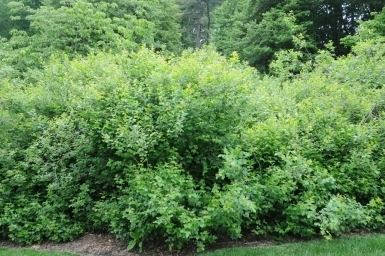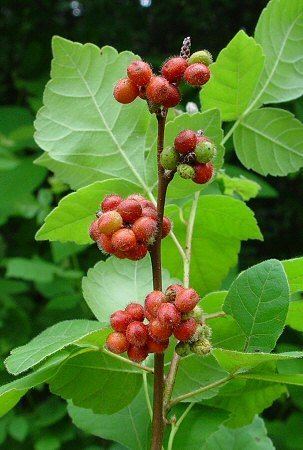Scientific name Rhus aromatica | Genus Rhus Rank Species | |
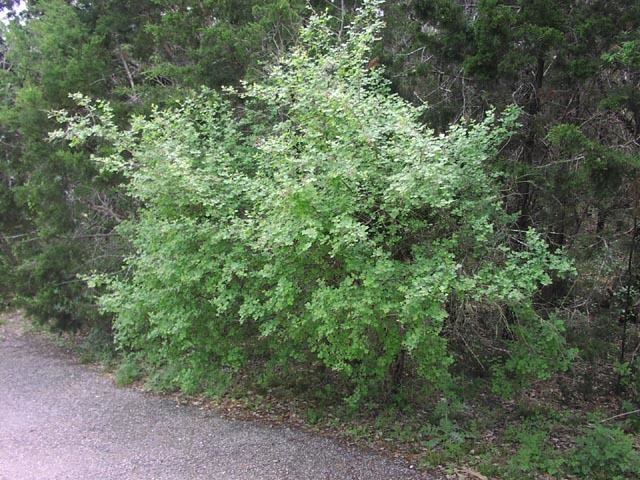 | ||
Similar Rhus glabra, Rhus trilobata, Rhus copallinum, Rhus typhina, Cornus racemosa | ||
Rhus aromatica
Rhus aromatica, the fragrant sumac, is a deciduous shrub in the family Anacardiaceae native to Canada and the United States from southeast Ontario to Vermont down into central Florida to west Texas up through Nebraska over to southern Wisconsin back to Ontario. It grows in upland open woods, fields, barrens, and rocky cliffs.
Contents
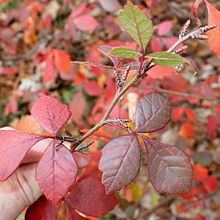
Fragrant sumac is a woody plant that can grow to around 2 to 4 meters tall (6 to 12 feet) with a rounded form. It produces yellow flowers in clusters in March or April before the leaves emerge, before anthesis.(1.) Pistillate (female) plants bear hairy red drupes in July or August that can last until the next March if not eaten by birds or small mammals. They can be brewed into a tea.
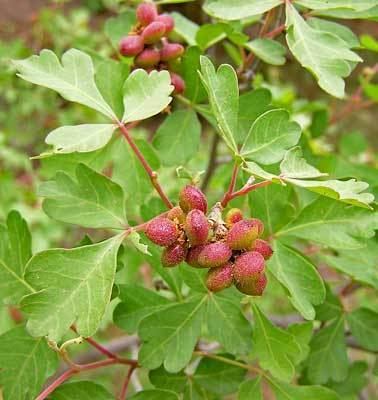
The leaves and stems of fragrant sumac have a citrus fragrance when crushed, hence the species name. Leaves resemble those of its relative poison ivy, however fragrant sumac is not poisonous. It inhabits mostly uplands areas, while poison ivy has no odor and can inhabit various habitats.(1.) The leaves are alternate and trifoliate with the middle leaflet being the largest of the three. It develops a good autumn color like other sumacs of bright yellow to red to red-purple. Some are grown by large, diverse nurseries or by native plant nurseries and are infrequently planted in landscapes in the Midwest and East. Grows in full deep shade to full sun and well-drained soils slightly acid to well alkaline with a pH range of about 6.0 to 8.5. it has a shallow, fibrous root system and is easily transplanted. Some of its branches can trail upon the ground and root and it can ground sucker to form a colony, depending on the site. (2.)

While this species is not really well-known and used a lot by landscapers and homeowners, the cultivar of 'Gro-low' is commonly planted as a high groundcover, and some are sold at most any nursery or garden center. However, buying this plant is done mostly by landscape architects and designers, (or by customers influenced by nursery personnel recommending it), who know the plant, while most homeowners do not know it and look instead for bushes or groundcovers with pretty flowers or evergreen foliage. 'Low-Gro' Sumac grows about 2 feet high and easily spreads 6 to 8 feet around, developing good autumn color.
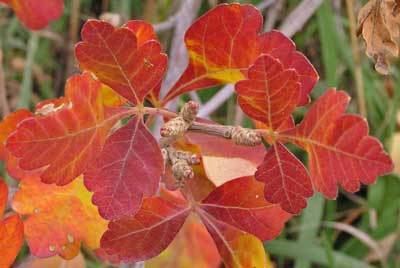
Gardening edible plants how to grow sumac rhus aromatica
